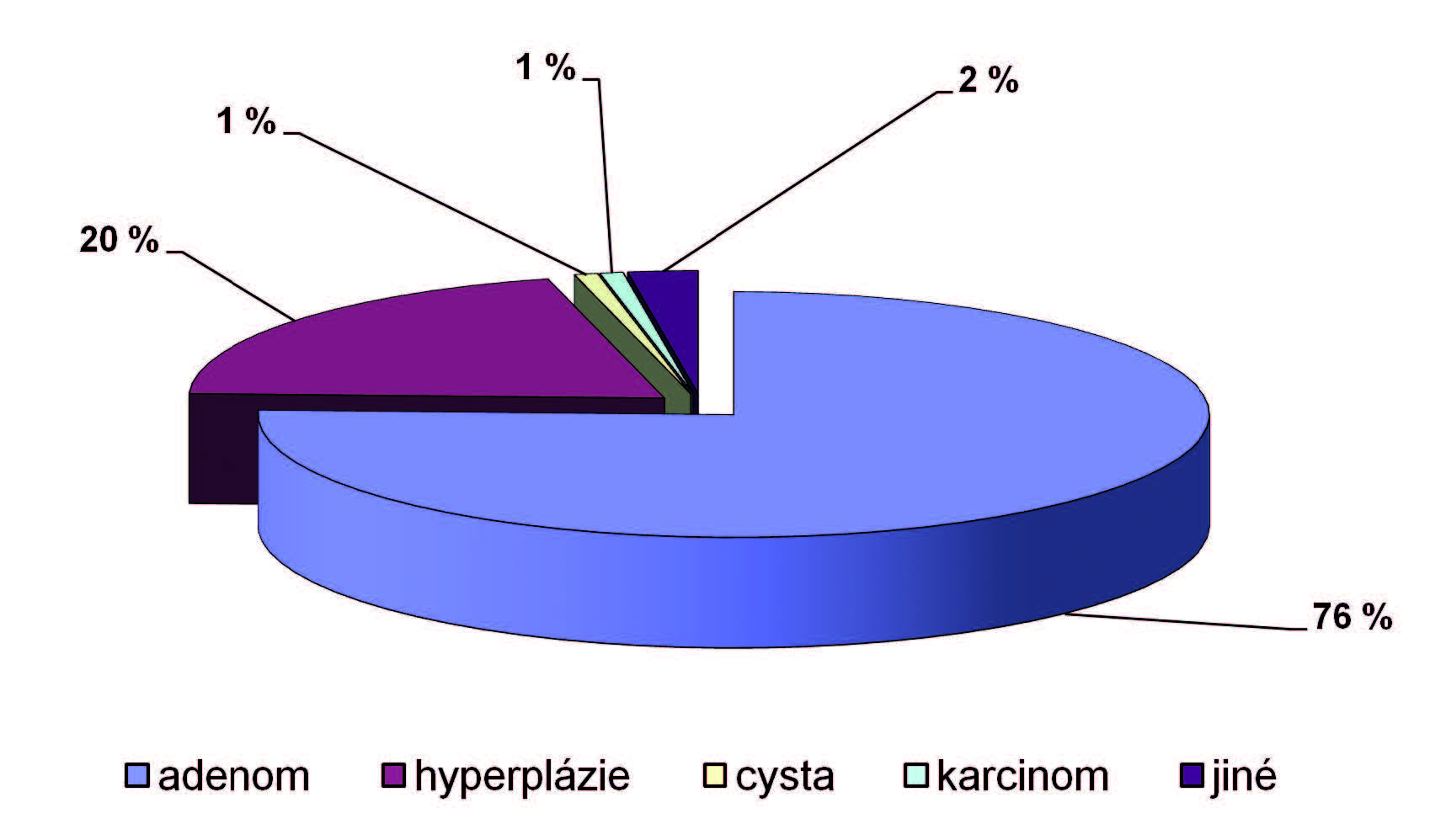Abstrakt
Úvod: Onemocnění příštítných tělísek – glandula parathyreoideae (PTG) – mají vzrůstající incidenci. Oproti incidenci benigních nádorů je incidence zhoubných PTG stále spíše vzácnou diagnózou. Morbidita chirurgické léčby je spojena s chirurgickým odstraněním patologicky změněné tkáně příštítného či více příštítných tělísek, především adenomu příštítných tělísek spojených s primární hyperparatyreózou (HPPT), ale také hyperplazií spojených se sekundární či terciární HPPT a v neposlední řadě HPPT způsobené karcinomem příštítného tělíska.
Metody: Byla provedena retrospektivní statistická analýza souboru operovaných pro onemocnění příštítných tělísek na Klinice otorinolaryngologie a maxilofaciální chirurgie 3. LF UK a ÚVN 2013–2019 (období 7 let). V uvedeném období bylo provedeno 127 operací pro onemocnění příštítných tělísek. Byla analyzována incidence morbidity, mortality, komplikací a letality.
Výsledky: V souboru bylo operováno 20 mužů a 107 žen. Průměrný věk nemocných je 54,7 roku, morbidita je 0,7 % paréz zvratných nervů z exponovaných nervů při operaci. Incidence trvalé pooperační normokalcemie je 98,43 %, která je prokázána poklesem parathormonu v séru. Tento stav pak byl ve 12 případech dosažen až po reoperaci (primární výkon pro primární HPPT byl v souboru ve dvou případech, 10 pacientů přichází k reoperaci se sekundární, resp. terciární HPPT z jiných pracovišť). U 12,6 % nemocných byl prokázán pokles hladiny PTH peroperačně, tzv. PTH assay (rychlý test hladiny parathormonu (PTH) v krevním séru). Pro nález sekundární, resp. terciární hyperparatyreózy bylo operováno 33 pacientů(26 % operací). Letalita (mortalita) chirurgie PTG se dělí na peroperační mortalitu do 24 hodin po výkonu a časnou...

